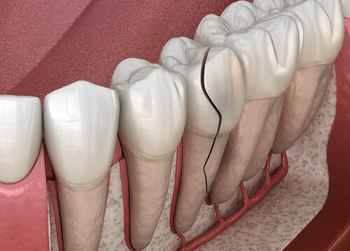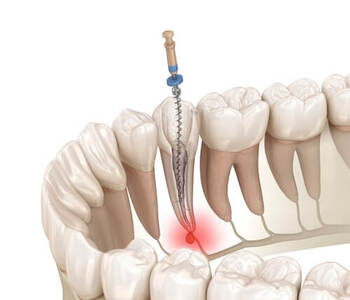
- Harris Dental Boutique
- root canal risks, root canal therapy, root canal treatment
- General Dentistry
A problem tooth can do more than cause discomfort—it can interfere with daily activities like eating and speaking. When dental issues arise, finding the right treatment can make a meaningful difference. Changes before and after a root canal go beyond appearance, affecting overall dental function and comfort. Many people wonder what to expect from the process and how it influences oral health. Recognising these changes can help in making informed decisions about care. Let’s explore what happens to your root canal before and after the treatment and how it shapes your smile.
What Is a Root Canal and When Is It Necessary?
A root canal is needed when an affected tooth develops deep decay or an infected pulp, causing severe pain and potential complications. The blood vessels inside the tooth may become inflamed or damaged, making it difficult to preserve the natural tooth without treatment. If an infected tooth is left untreated, the problem can worsen, affecting surrounding areas. Addressing the issue early helps prevent further damage and reduces discomfort.
What Is Involved in the Root Canal Procedure?

Examining the Tooth and Identifying the Problem
The procedure starts with an in-depth review to gauge the level of damage. The dentist assesses symptoms such as sensitivity, discomfort, or swelling to pinpoint the affected area. Diagnostic imaging, often through X-rays, is used to detect any hidden concerns within the tooth structure. If a tooth infection is confirmed, proceeding with treatment becomes necessary to prevent further damage. Once the issue is identified, a personalised plan is created to restore dental health effectively.
Preparing the Tooth for the Procedure
To ensure comfort during the process, a local anaesthetic is applied to numb the surrounding area. Once the patient is comfortable, the dentist isolates the treated tooth using a specialised barrier to keep it dry and free from saliva. This step prevents bacteria from entering the root canal system during treatment. A precise opening is then made on the surface of the tooth to access the inner structure. This allows for the removal of damaged or infected soft tissue, which is a critical part of the procedure.
Cleaning and Shaping the Root Canals
After accessing the inner portion of the tooth, the dentist carefully removes the infected tooth pulp. Special instruments are used to clean the canals thoroughly, ensuring that all harmful bacteria and debris are eliminated. The space is then shaped to prepare for sealing, which helps prevent reinfection. This stage is crucial, as any remaining bacteria could lead to complications if not properly addressed. A specialised solution is also used to disinfect the area, promoting a clean and healthy foundation for the next step.
Filling and Sealing the Canals
Once the space is cleaned, a biocompatible material is placed inside to seal the canals. This step prevents bacteria from re-entering and causing further damage. A temporary filling is applied to the opening of the tooth to protect it while healing takes place. In some instances, the patient may require extra appointments to complete the restoration. Ensuring a secure seal is essential in maintaining the integrity of the tooth and preventing future infections.
Final Restoration and Strengthening the Tooth
To reinforce the tooth and restore function, a permanent restoration is recommended. In several instances, a crown is applied to the treated tooth to add support and long-term resilience. This final step ensures that the tooth can withstand normal biting and chewing forces. The restoration also enhances the tooth’s appearance, blending seamlessly with natural teeth. With the proper final restoration, the tooth remains functional and protected from further damage.
A Step Toward Lasting Oral Health
Undergoing a root canal treatment not only relieves discomfort but also prevents the need for extraction. Each step in the dental procedure plays a vital role in preserving the original structure of the tooth. With timely care, patients can regain their dental health and preserve a strong, beautiful smile.
What Are the Key Benefits of Root Canal Treatment?
Preserving the Natural Tooth for Long-Term Function
One of the primary benefits of this treatment is that it allows the tooth to remain intact rather than being removed. Unlike extraction, which creates a gap that may require further intervention, this approach helps maintain normal chewing ability. Keeping the original tooth also preserves jawbone density, preventing changes in facial structure. With the right restoration, such as a crown, the treated tooth continues to function without compromising adjacent teeth. This long-term stability supports overall dental health and minimises the need for additional procedures.

Providing Lasting Relief from Discomfort
Pain from an infected or inflamed tooth can affect concentration and quality of life. The procedure eliminates the source of discomfort by removing damaged tissue inside the tooth. Once the canals are cleaned and sealed, sensitivity to temperature and pressure is significantly reduced. Many patients experience noticeable improvement soon after treatment, allowing them to return to their regular activities. The relief provided by this approach ensures that further complications do not arise due to untreated infections.
Preventing the Spread of Infection
When bacteria reach the inner portion of a tooth, they can cause further complications if left unaddressed. The treatment process removes infected material, preventing it from affecting surrounding tissues. By stopping the infection at its source, the procedure reduces the risk of abscesses or further damage to nearby teeth. This preventive measure plays a significant role in maintaining oral health. By resolving the problem early, patients can avoid more extensive treatments in the future.
Maintaining the Natural Appearance of the Smile
Teeth contribute to facial structure and overall appearance. A missing tooth can cause shifting in alignment, leading to further dental concerns. By saving the affected tooth, the treatment ensures that the smile remains complete and functional. The final restoration, such as a customised crown, blends seamlessly with natural teeth for a uniform look. This approach enhances confidence while ensuring the ability to chew and speak comfortably.
Supporting Long-Term Oral Health
By addressing the issue at its core, this procedure helps protect overall dental function. The treated tooth can last for many years with proper care, preventing complications that could lead to more invasive treatments. Regular dental visits, along with consistent oral hygiene, contribute to maintaining the results of the treatment. Protecting the structure of the tooth ensures that adjacent teeth are not affected by unnecessary shifting. A proactive approach to dental care helps in sustaining a strong and healthy smile.
A Step Toward a Healthier Smile
Root canal treatment offers a reliable way to relieve discomfort while preserving the tooth. The benefits extend beyond pain relief, supporting overall oral health and function. Seeking timely care helps prevent further complications, ensuring that the smile remains strong for years to come.
How Can You Care for Your Tooth After a Root Canal?
Ensuring proper care after a root canal helps maintain the treated tooth and supports overall recovery. Taking the right steps can protect the tooth, prevent complications, and promote long-term dental health.
Protecting the Treated Tooth in the First Few Days
After the procedure, the area may feel sensitive as it adjusts to the changes. Avoiding hard or crunchy foods can prevent unnecessary strain on the treated tooth. Sticking to softer options, such as soups or mashed vegetables, helps minimise discomfort. It is also advisable to chew on the opposite side of the mouth to reduce pressure. Giving the area time to heal supports a smoother recovery and ensures that no additional stress is placed on the tooth.
Managing Sensitivity and Discomfort
Mild soreness is common following the treatment, but it usually subsides within a few days. Over-the-counter pain relief can help manage any lingering discomfort. Rinsing with warm salt water may also soothe the gums and reduce irritation. If sensitivity persists or worsens over time, it is essential to seek professional advice. Keeping an eye on any sudden changes can help maintain progress and decrease the risk of setbacks.
Maintaining Good Oral Hygiene
Keeping the mouth clean is crucial to protecting the treated area and preventing infections. Brushing gently with a soft-bristled toothbrush ensures that plaque and bacteria are removed without irritating the tooth. Using an alcohol-free mouthwash can provide additional protection without causing sensitivity. Flossing carefully around the area helps keep surrounding teeth clean without putting pressure on the treated tooth. Staying consistent with oral hygiene habits plays a key role in maintaining long-term dental health.
Avoiding Certain Habits That Can Affect Healing
Some everyday habits can interfere with the healing process and should be avoided after treatment. Chewing on hard objects, such as ice or pens, may put unnecessary pressure on the tooth. Clenching or grinding teeth, whether during the day or at night, can weaken the structure over time. Using a mouthguard while sleeping can help protect against unintentional grinding. Making small adjustments can go a long way in ensuring the longevity of the treated tooth.
Attending Follow-Up Appointments for Additional Protection
Consistent dental examinations allow the dentist to monitor the tooth and ensure it remains strong after treatment. Any signs of discomfort, swelling, or uneven biting should be discussed during follow-up visits. Professional care ensures that the tooth stays functional and blends naturally with the rest of the smile. Taking these steps contributes to a successful recovery and long-term stability.
Long-Term Care for a Healthy Smile
Even after the initial healing period, maintaining strong dental habits is essential. Regular cleanings, along with daily brushing and flossing, help protect the tooth and surrounding structures. Staying mindful of dietary choices and avoiding excessive sugar intake reduces the risk of future concerns. Keeping up with scheduled dental visits allows for early detection of potential issues. With proper care, the treated tooth can remain in excellent condition for many years.
What Factors Influence the Price of a Root Canal Procedure?
The cost of a root canal procedure varies from person to person, as several elements influence the total expense. Knowing what impacts the pricing can help patients plan for treatment and make informed decisions about their dental care.
The Complexity of the Case
Each tooth is structured differently, with molars having more roots than front teeth. Since molars require additional time and precision, treating them tends to be more expensive. If an infection is widespread or the canals are more challenging to access, additional steps may be needed, increasing the overall cost. The number of affected roots and the severity of the issue contribute to the final price.
The Level of Infection Present
When a tooth infection is caught early, the procedure can be completed with fewer complications. However, if the infection has progressed, more steps may be needed to remove bacteria and prevent reinfection. Some cases require medication inside the canal before sealing it, which can extend treatment time and increase costs. In more severe situations, multiple visits may be necessary to ensure the area is fully treated. The extent of the infection often determines the overall approach and pricing.

Additional Treatments Required
In certain cases, a root canal is just one part of the treatment plan. If a significant portion of the tooth is damaged, a crown may be recommended to strengthen and protect it. Additional imaging or advanced techniques may also be required, affecting the final cost. Restoring the tooth properly ensures long-term success and reduces the likelihood of further complications. These extra procedures contribute to the total expense of treatment.
The Dental Clinic’s Location and Expertise
Where the treatment is performed can also influence pricing, as dental clinics in different areas have varying overhead costs. Clinics with advanced technology and experienced dentists may charge more, reflecting the level of care provided. Higher expertise can lead to a more precise and efficient procedure, improving the outcome. While pricing varies, prioritising quality treatment ensures better long-term results. Choosing a trusted clinic like ours provides reassurance and professional care throughout the process.
Say Goodbye to Tooth Pain with Lasting Relief
A root canal can transform both your oral health and daily comfort by addressing tooth pain and restoring function. Before treatment, discomfort and sensitivity may disrupt everyday activities, but after the procedure, relief and improved stability allow you to enjoy a fully functional smile. Ensuring proper care and attending follow-up visits will help maintain long-term results. If you’re experiencing persistent discomfort, suspect an infection, or need a root canal, professional care can make all the difference. Don’t let dental concerns hold you back—call us today at 07 4158 5813 to schedule a consultation and protect your smile for the future.
Note: Any surgical or invasive procedure carries risks. Before proceeding, you should seek a second opinion from an appropriately qualified health practitioner.
References
https://medlineplus.gov/ency/article/007275.htm
https://pmc.ncbi.nlm.nih.gov/articles/PMC2219109





